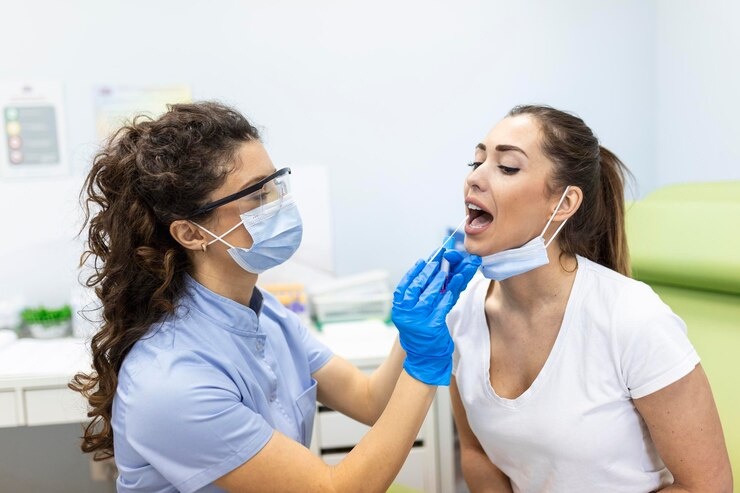Introduction
Corrective jaw surgery, also known as orthognathic surgery, is a transformative procedure that addresses structural abnormalities of the jaw and facial skeleton. Beyond mere aesthetics, corrective jaw surgery can significantly improve bite function, speech clarity, and overall facial harmony. This exploration delves into the profound impact of corrective jaw surgery on both physical appearance and functional well-being.
Understanding Corrective Jaw Surgery
Corrective jaw surgery is a complex surgical procedure designed to correct abnormalities in the alignment of the jaws and facial bones. These abnormalities, known as dentofacial deformities, can result from developmental issues, genetics, trauma, or medical conditions such as temporomandibular joint (TMJ) disorders. Corrective jaw surgery aims to realign the jaws, improve bite function, alleviate symptoms, and enhance facial aesthetics.
Transformative Effects on Facial Aesthetics
One of the most noticeable outcomes of corrective jaw surgery is its transformative effect on facial aesthetics. By realigning the jaws and correcting asymmetries, the surgery can enhance facial balance, symmetry, and proportion. Patients often experience a more harmonious profile, defined jawline, and balanced facial features, leading to increased self-confidence and improved body image.
Moreover, corrective jaw surgery can address specific aesthetic concerns such as a receding chin, protruding jaw, or gummy smile, resulting in a more pleasing facial appearance. The procedure may also alleviate the appearance of facial asymmetry, which can be caused by skeletal discrepancies between the upper and lower jaws.
Improvements in Bite Function and Speech Clarity
Beyond aesthetics, corrective jaw surgery can significantly improve bite function and speech clarity. Dentofacial deformities such as overbites, underbites, and crossbites can impair chewing efficiency, cause jaw pain, and contribute to speech difficulties. By repositioning the jaws into proper alignment, corrective jaw surgery restores occlusal harmony, enabling patients to chew more effectively and speak with greater clarity.
Furthermore, corrective jaw surgery can alleviate symptoms associated with TMJ disorders, such as jaw pain, clicking or popping sounds, and limited jaw movement. By optimizing the alignment and function of the jaw joints, the surgery can alleviate discomfort and improve overall jaw function.
Psychosocial Benefits and Quality of Life
The psychosocial benefits of corrective jaw surgery are profound, often extending beyond physical improvements to enhance overall well-being and quality of life. Many patients report increased self-esteem, confidence, and social integration following surgery. The ability to smile, speak, and eat without hesitation or discomfort can have a transformative impact on self-image and interpersonal relationships.
Moreover, corrective jaw surgery can alleviate psychological distress associated with facial asymmetry, dental misalignment, and functional limitations. Patients often experience a newfound sense of freedom and empowerment, allowing them to pursue opportunities and activities that were previously hindered by their condition.
Patient Considerations and Recovery
Before undergoing corrective jaw surgery, patients undergo a comprehensive evaluation by a multidisciplinary team of healthcare professionals, including oral and maxillofacial surgeons, orthodontists, and speech therapists. Treatment planning involves detailed analysis of facial and dental structures, as well as consideration of the patient's aesthetic goals and functional needs.
Recovery from corrective jaw surgery typically involves a period of postoperative care and rehabilitation, including dietary modifications, pain management, and physical therapy. Patients may experience temporary swelling, bruising, and discomfort following surgery, but these symptoms typically subside over time. With proper adherence to postoperative instructions and follow-up care, most patients can expect a smooth recovery and long-term success.
Conclusion
Corrective jaw surgery is a transformative procedure that offers profound benefits for patients with dentofacial deformities. By addressing structural abnormalities of the jaws and facial skeleton, the surgery can enhance facial aesthetics, improve bite function, alleviate symptoms, and enhance overall quality of life. The transformative effects of corrective jaw surgery extend beyond physical appearance to encompass psychosocial well-being, confidence, and self-esteem.
As advancements in surgical techniques and technology continue to evolve, the future of corrective jaw surgery holds promise for further improvements in patient outcomes, treatment precision, and recovery. By exploring the transformative effects of corrective jaw surgery, we can gain a deeper understanding of its profound impact on patients' lives and well-being, empowering individuals to pursue optimal oral health and facial harmony.


No comments yet